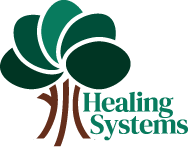Healing-Centered Engagement
lens is important, this approach has limitations.

Alternatively, healing-centered engagement addresses harm and restores well-being. It helps systems move from a culture of harm, discipline, punishment, and confinement to restoration and hope.
- Emphasizing that the causes of trauma are in the environment, not the individual
- Focusing on restoration to build on peoples’ strengths, rather than reduce symptoms
- Emphasizing that service providers must be supported in their own healing


Healing-centered engagement must be implemented at an individual, interpersonal, and institutional level. Individually, it involves reflecting on personal trauma and healing stories. Interpersonally, we must heal relationships that have experienced trauma and work to create meaningful bonds with others. At an institutional level, we need to create policies, practices, and values that foster well-being.
Although Dr. Shawn Ginwright coined the term, “healing-centered engagement,” many activists and thought leaders have pushed for similar work.
Find organizations that offer healing-centered practices
There are many organizations that support healing-centered engagement and related practices.
Use this directory to find organizations in Maryland and across the United States.
What is Maryland doing to build healing systems?
The Maryland Commission on Trauma-Informed Care was created in 2021 to coordinate a statewide effort to prioritize the trauma-responsive and trauma-informed delivery of state services that affect youth, families, and older adults.
The commission and state leadership are working toward making state service systems trauma-informed, resilience-oriented, and equitable (TIROE).

The framework used by the Trauma-Informed Care Commission is guided by nine principles:
- Safety (Cultural, Physical, Psychological, Social, Moral)
- Trustworthiness and Transparency
- Inclusion of the Voice of Lived Experience
- Collaboration and Mutuality
- Empowerment, Voice, and Choice
- Cultural, Historical, and Gender Concerns
- Anti-Racism
- Anti-Bias
- Social Justice
Where can your organization apply this framework?
This PDF describes areas, or implementation domains, where an organization can use a trauma-informed approach. Examples of implementation domains include leadership, physical environment, financing, evaluation, and more.
